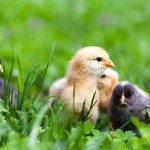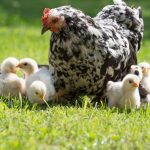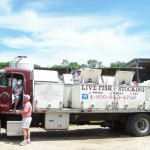
One flock owner recently asked me about the diet of his laying hens. He’s feeding his flock a complete feed, and supplementing the complete feed with bread, porridge and meal-worms.
“I want to stop this habit (of feeding so many treats) as it’s expensive, but how?” he asked. My response to him – and to other flock raisers – is to follow a 90/10 rule for laying hens: 90% complete feed and 10% treats. Not only can this cut on costs, it helps us provide a balanced diet to our birds.
10% Treats
We recommend limiting the amount of treats we give our hens to 10 percent of the diet.This allows us to shift our focus to providing nutrients through a complete feed. Though treats are a fun addition to our flock, a complete feed provides the necessary nutrients our hens need to stay healthy and produce high-quality eggs.
I encourage flock owners to think of kitchen scraps and scratch grains as M&M’s for birds; fun to eat and a nice treat, but you wouldn’t want to make a meal of them. Similar to candy for us, kitchen scraps and scratch grains are not fortified with vitamins and minerals – key nutrients that laying hens require.
In fact, every time we provide unfortified feeds, we dilute the complete nutrition of the layer feed and the hens may actually receive less nutrition than they would if they just ate their complete feed. If we feed high levels of treats, the hens will likely eat more of them than their fortified feed, causing them to miss out on the nutrients they need.
Since we all know it is fun to feed treats, feel free to view these items as special goodies that our hens get in small amounts a few times a week – but be cautious to not overfeed.
90% Complete Feed
To help hens receive the nutrients they need, provide at least 90 percent of their diet through a complete feed formulated specifically for laying hens.
Hens require at least 38 different nutrients, including vitamins, minerals, amino acids and energy. Many of these nutrient requirements increase as hens continue to lay eggs. Complete feeds are formulated to provide this balanced diet.
Let’s take a look at one of these 38 required nutrients: Calcium. If the hen is eating high levels of scratch grains or kitchen scraps, she won’t consume her daily allotment of complete feed. Without the complete feed levels she needs, she won’t have the calcium she requires to produce strong, high-quality eggshells. Instead, she will pull from her calcium reserves to produce eggs, potentially resulting in a weak skeletal structure.
Similar trends can be seen if the other essential nutrients are not provided in the proper levels. To meet the increased nutrient demands of egg production, choose a high-quality complete layer feed and ensure it is the primary part of the hen’s diet. A complete feed is formulated to provide all of the nutrients your bird requires for long-term health and nutritious eggs.
For hens 18 weeks and older, look for a complete feed that includes:
- 16% (minimum) protein level
- Lysine and methionine, essential amino acids
- Calcium, manganese and trace minerals for strong shells
- Fortified with vitamins, trace minerals and essential amino acids
- Prebiotics and probiotics for hen health
A complete feed, like Purina® Layena® Premium Poultry Feed, can help hens receive the nutrients they require. By choosing a complete layer feed, comprised of high-quality ingredients, and sticking to the 90/10 rule, we can help our hens stay happy, healthy and productive.



